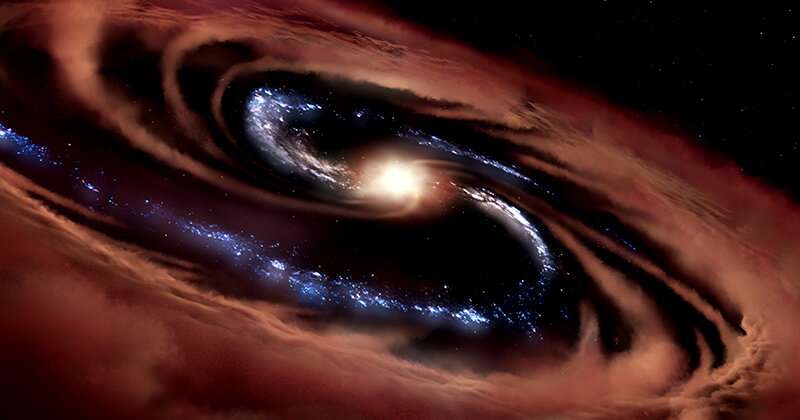HOME
Galaxy survives black hole's feast—for now

Illustration of the galaxy called CQ4479. The extremely active black hole at the galaxy’s center is consuming material so fast that the material is glowing as it spins into the black hole’s center, forming a luminous quasar. Quasars create intense energy that was thought to halt all star birth and drive a lethal blow to a galaxy’s growth. But SOFIA found that the galaxy CQ4479 is surviving these monstrous forces, holding on to enough cold gas, shown around the edges in brown, to birth about 100 Sun-sized stars a year, shown in blue. The discovery is causing scientists to re-think their theories of galactic evolution. Credit: NASA/ Daniel Rutter
Black holes are thought to gobble up so much surrounding material that they put an end to the life of their host galaxy. In that process they create a highly energetic object called a quasar which was previously thought to halt star birth. Now researchers have found a galaxy that is surviving the ravenous forces of a quasar by continuing to birth new stars –about 100 Sun-sized stars a year.
The discovery made by the Stratospheric Observatory for Infrared Astronomy (SOFIA) can explain how massive galaxies came to be even though the Universe is dominated by galaxies that no longer form stars. The results are published in the Astrophysical Journal.
"This shows us that the growth of active black holes doesn't stop star birth instantaneously, which goes against all the current scientific predictions," said Allison Kirkpatrick, assistant professor at the University of Kansas in Lawrence Kansas and co-author on the study. "It's causing us to re-think our theories on how galaxies evolve."
News Source